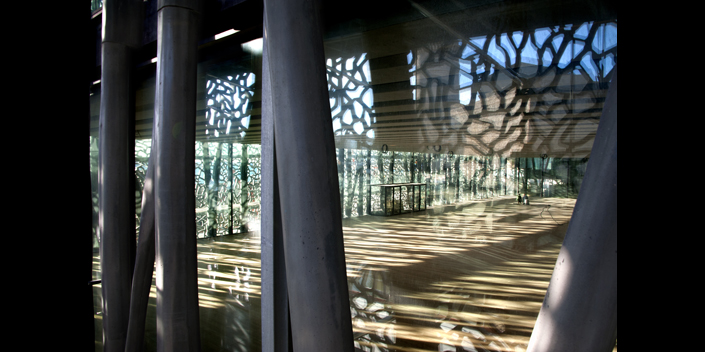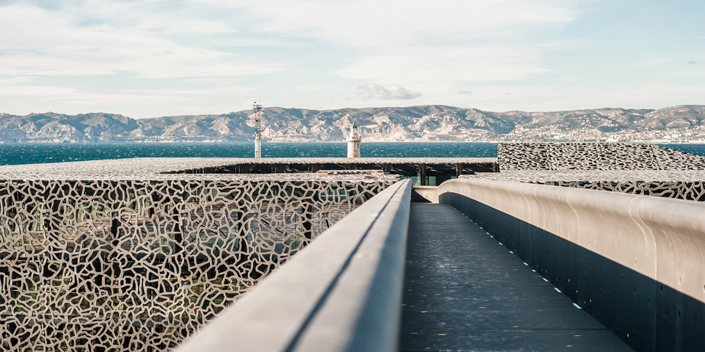Window, mirror, screen, and showcase: in order to reflect contemporary societies, museums put objects in and out of context.
However, the contemporary’s proximity to us, chronologically, emotionally, and symbolically, means that museums need to review their practices. How is this proximity expressed through architectural, display and museum design choices?
Should we attempt to explain, and aim at an unattainable objectivity, or settle for sensitive immersion, which would foster an illusion of free interpretation?
Summaries
Scenography and architecture of War museums and memorials
When it is not considered as a mere military matter, but rather as part of the political, economic and cultural history of nations, war is a complex and multifaceted phenomenon. It offers several - sometimes incompatible and often controversial - points of view, which should be interpreted and represented in relation to an idea of history in the broad sense, which raises many questions. Within contemporary societies, the process of selecting and reorganizing historical data are at the heart of the construction of a shared history, although with a critical eye, it is associated with the most difficult and painful events.
With the tools and means at their disposal (exhibits, scenography, architecture), museums dedicated to - contemporary - war history must raise awareness through a “memory policy” that, without making sacred nor popularizing, must involve all cultural institutions, including those devoted to the education of younger generations. As the last witnesses of history are passing away, as memories dim and are altered, war events get increasingly intertwined with their historical representations, particularly in museums, and preserving those memories becomes increasingly crucial, lest the knowledge they represent is lost to the present and the future.
The topicality of the ideological debate in the museum of the future
As a rule, museums avoid inconsistencies. But why should the scientific debate be hidden from the visitors? How should contradictions and paradoxes be treated in a museum? The Time museum’s project in Montevideo (Uruguay) is a good source of examples.
The « Mémoire de corps. Ados à corps perdus » exhibition at the Musée d’Aquitaine
Launched in 2003, the « Mémoire de corps» project has become a unique cultural and therapeutic experience. It is the result of the unlikely association of the Musée d’Aquitaine and the Pôle Aquitain de l’Adolescent. Their realizations were unveiled in 2006 through an important exhibition about anorexia entitled: « Mémoire de corps. Ados à corps perdus ».
How contemporary should the traditional be? The case of Kesra, a village in Tunisia
Conceiving of an ethnographic museum about the contemporary within a traditional village, closed to modernity and resistant to change; introducing modern museographic concepts at odds with the suspicious and conservative nature of the inhabitants; getting them involved in the different stages of the creation of the museum and entrusting them with its management are challenges that need to be addressed in order to promote culture and heritage conservation in a destitute area.
The challenges of the contemporary in museology and in museography: the case of the Diyarbakir City Museum in Turkey
Diyarbakır is an 8000 years old city where heritage sites have always been largely confined to within the great city walls, which bears the marks of the numerous conflicts, diasporas, immigrations and assimilations that combine to make the place far from ideal for the preservation of the material evidence of the collective memory formed by several communities. Consequently, the museum project has to “reinvent the contemporary” in order to visualize and tell this shared history, to both Diyarbakır’s inhabitants and visitors.
Aboriginal art: the secret and the public between the contemporary and the traditional
In 1971, a few « elders » from the Papunyan community of the Central Australian desert started telling their ancestral stories – some of which are secret - to white people through paintings. This new practice has been polemical. This communication will succinctly go back over the history of the debates and then analyze the transition from the private to the public sphere, and its impact on the organization of international exhibitions.
The Poetics and Politics in Ethnographic and Civilization Museums
There is no doubt that ethnographic and civilization museums in the post-modern world have been undergoing an identity crisis. Some researches were hurry to declare that these museums are no more than dead storehouses. Their claims were based on the idea that there is no reason, need, priority and authority for "us" to present and represent the "other". In those cultural shrines of colonialism the objects were stood metonymically for the distant "others", places and cultures.
As a result of the post-colonial era, ideas of multiculturalism, politics of identity and post-structuralist reflexivity have emerged in the academic world and spread in the intellectual discourses that have penetrated, to the museum world, as well.
The MuCEM, the museum that this symposium is taking place, is an evident fact and an answer to the relevant perception of seeing our current world.
The aim of this paper is to focus and reflect mainly on the ethical raison d'être of these museums spaces nowadays in our globalized, virtual and uncertain world and to concentrate on the obstacles, responsibilities and challenges that we have to deal with in the present, especially for the future.
In my opinion, the way of looking at the past material cultures and especially dealing with contemporary objects is not universal. Different missions of conserving, exhibiting, presenting, representing, educating and especially empowering are needed in varied societies. The western culture and the European world are facing other questions and dilemmas than other cultures in other places.
In this paper I would like to borrow Clifford James's term - "contact zones"(1) and to claim that museums milieus are contemporary contact zones of objects, people, ideology, unity, diversity, past, present, poetics and politics. I will concentrate on few examples from current projects and exhibitions in few ethnographic and heritage centers in few countries, which will clarify the complexity of these issues
![[Palestine] Invisibility Revised [Palestine] Invisibility Revised](/sites/default/files/assets/images/web-mohanad_yaqubi_reem_shilleh-2_-r_dr.jpg)
![[Palestine] Conversation Nord-Sud, Daney Sanbar [Palestine] Conversation Nord-Sud, Daney Sanbar](/sites/default/files/assets/images/web-nord-sud1_-r-adr.jpg)
![[Palestine] Jean-Luc Godard / Elias Sanbar, Here and Elsewhere [Palestine] Jean-Luc Godard / Elias Sanbar, Here and Elsewhere](/sites/default/files/assets/images/web-ici_et_ailleurs_-r_dr.jpg)
![[Palestine] Off Frame [Palestine] Off Frame](/sites/default/files/assets/images/web-offframe_poster.jpg)
![[Palestine] The Lumière Brothers in Palestine [Palestine] The Lumière Brothers in Palestine](/sites/default/files/assets/images/web-freres_lumiere_palestine_3_-r_dr.png)


